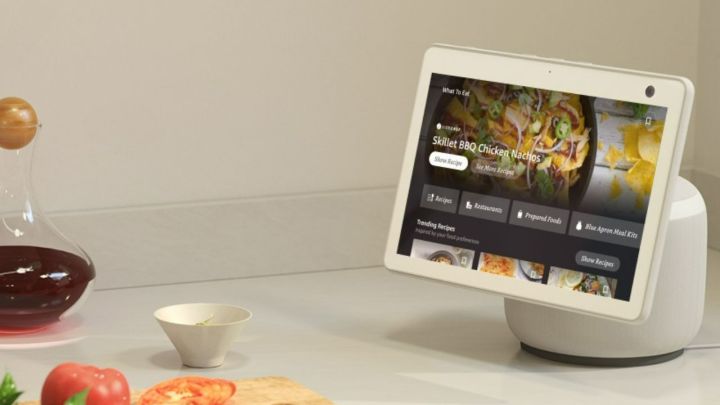The world of smart displays is dominated by two companies — Amazon and Google. Amazon is responsible for the Echo Show 10, while Google is behind the Nest Hub Max. Both offer large screens, access to a massive roster of apps, and the ability to connect (and control) the rest of your smart home. There are a lot of similarities between the two popular displays, but there are a few key differences you should be aware of before adding one to your home.
Here’s a closer look at the Echo Show 10 and Nest Hub Max to help you decide which is best.
Pricing and design

The Nest Hub Max costs $229 and is designed to sit on your countertop. It features a large display, an oblong base, and a webcam built into the top of the unit. The Echo Show 10 costs $250 and looks eerily similar to the Nest Hub Max. But instead of an oblong base, it features one that’s round and elevates the display a bit farther from the ground. No matter how you cut it, both are sharp devices and look great regardless of where you place them. However, the smaller price tag of the Nest Hub Max makes it slightly more appealing.
Winner: Nest Hub Max
Display size and quality

As you’d expect, the Echo Show 10 boasts a 10.1-inch HD touchscreen. It’s built to move with you, allowing you to stay in focus during video calls, even if you’re moving around in the kitchen or through your living room. The Nest Hub Max features a 10-inch HD touchscreen and also uses auto-framing to keep you in focus during video calls. But where the Echo Show 10 physically rotates its screen to follow you, the Nest Hub Max doesn’t. That only gives it a 127-degree viewing angle compared to the 715-degree rotation offered by the Echo Show 10.
Winner: Echo Show 10
Features and smart home connectivity

Both the Nest Hub Max and Echo Show 10 offer tons of connectivity and smart features. For the Nest Hub Max, you’ll get to use it as a hub for Google Home — allowing you to control other devices or check in on streams from your security cameras. It also benefits from stereo speakers and a three-inch woofer that are great for pumping music through your home. Other features include a built-in webcam, support for popular apps (including Netflix and Spotify), and the option to display photos.
Many of those features can also be found on the Echo Show 10. This includes a built-in webcam, support for Netflix, Spotify, and other leading apps, the option to display digital photos, and powerful speakers (including a three-inch woofer). But instead of support for Google Home, the Echo Show 10 is built for Alexa.
Winner: Tie
Which is the better smart display?
Since both the Nest Hub Max and Echo Show 10 share so many features, it’s impossible to say one is better than the other. Both are highly capable smart displays with large, vibrant screens — and you can’t go wrong adding either one to your home. Both support a wide range of apps and are great for making video calls or listening to music.
The primary difference between the two is their respective smart home platform. If your home is already filled with Google Home devices, pick the Nest Hub Max. If your home is filled with Alexa devices, pick the Echo Show 10.
If you’re just starting your smart home journey, consider picking up whichever one is currently on sale. Both Google Home and Amazon Alexa have a deep library of supported smart devices, so you won’t have any issues finding smart locks, smart lights, or other smart devices that play nicely with your chosen smart display.



